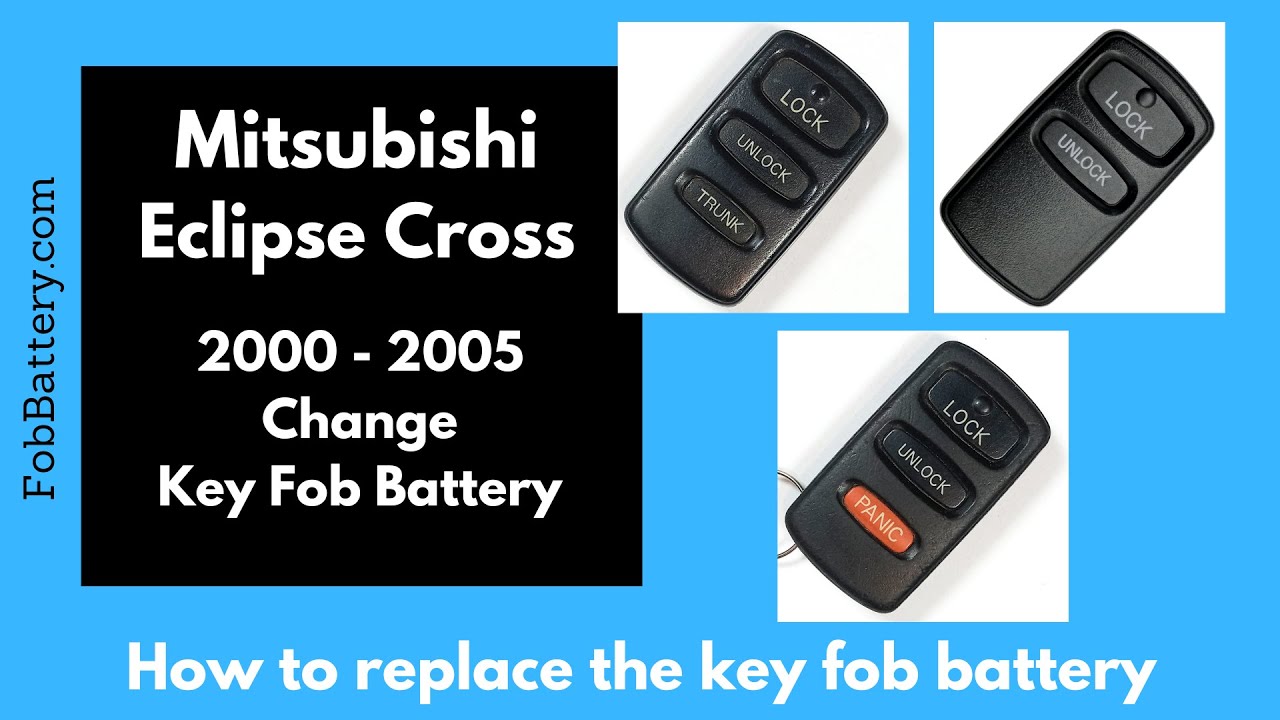Introduction
Welcome to a detailed guide on replacing the battery in your Mitsubishi Eclipse Cross key fob. This guide covers the 2000 to 2005 models. You might have a key fob with two or three buttons, but the process remains the same.
In this blog, I’ll walk you through the steps to replace the battery in your key fob. With just a few tools and a new battery, you’ll have your key fob working in no time.
- Plastic, Metal
- Imported
- IN THE BOX: 4-pack of CR2032 3 volt lithium coin cell batteries; replacement for BR2032, DL2032, and ECR2032
Tools and Materials Needed
Before you start, gather the following items:
- CR2032 battery
- Small Phillips head screwdriver
- Flathead screwdriver (optional)
You can purchase the CR2032 battery and a set of precision screwdrivers online. The links provided will guide you to suitable options.
Step-by-Step Guide
Remove the Screw
First, locate the small screw on the back of your key fob. Use the Phillips head screwdriver to remove this screw. Keep the screw safe as you’ll need it later.
Open the Key Fob
Next, try to open the key fob by prying it apart with your fingers. If it feels stuck, use a flathead screwdriver. Insert it into the corner and twist gently until the key fob opens.
Remove the Old Battery
Once open, you’ll see the old battery. Use the precision screwdriver or a flathead screwdriver to pry the battery out. Dispose of the old battery properly.
Insert the New Battery
Take your new CR2032 battery. Insert it into the key fob with the positive side facing down. Ensure that the battery sits securely in its place.
Reassemble the Key Fob
If your key fob has a key ring, place it back on the post. Align the two halves of the key fob and press them together until they click into place.
Screw the Key Fob Back Together
Finally, reinsert the screw you removed earlier and tighten it with the Phillips head screwdriver. Your key fob should now be fully functional.
- Plastic, Metal
- Imported
- IN THE BOX: 4-pack of CR2032 3 volt lithium coin cell batteries; replacement for BR2032, DL2032, and ECR2032
Tips and Troubleshooting
Stubborn Key Fob
If your key fob is difficult to open, do not force it. Use the flathead screwdriver carefully to avoid damaging the plastic casing.
Battery Orientation
Ensure the new battery is inserted with the positive side down. Incorrect orientation will prevent the key fob from working.
Key Ring Reattachment
When reassembling the key fob, make sure the key ring is securely attached to avoid losing it.
FAQs
What type of battery does the Mitsubishi Eclipse Cross key fob use?
The key fob uses a CR2032 battery.
Where can I buy a CR2032 battery?
You can purchase CR2032 batteries online. Links are provided in this guide for your convenience.
- Plastic, Metal
- Imported
- IN THE BOX: 4-pack of CR2032 3 volt lithium coin cell batteries; replacement for BR2032, DL2032, and ECR2032
Do I need any special tools to replace the battery?
You will need a small Phillips head screwdriver. A flathead screwdriver may also be helpful.
How often should I replace the key fob battery?
It varies, but typically every 1-2 years depending on usage.
Can I damage the key fob while replacing the battery?
Yes, if you use excessive force or the wrong tools. Follow the steps carefully to avoid damage.
Conclusion
Replacing the battery in your Mitsubishi Eclipse Cross key fob is a straightforward process. With just a few tools and a new battery, you can save money and avoid the hassle of a non-functional key fob.
If you found this guide helpful, please leave a comment or like this post. For more tutorials on key fob battery replacements, visit our website or subscribe to our channel.
Thank you for reading, and happy fixing!


